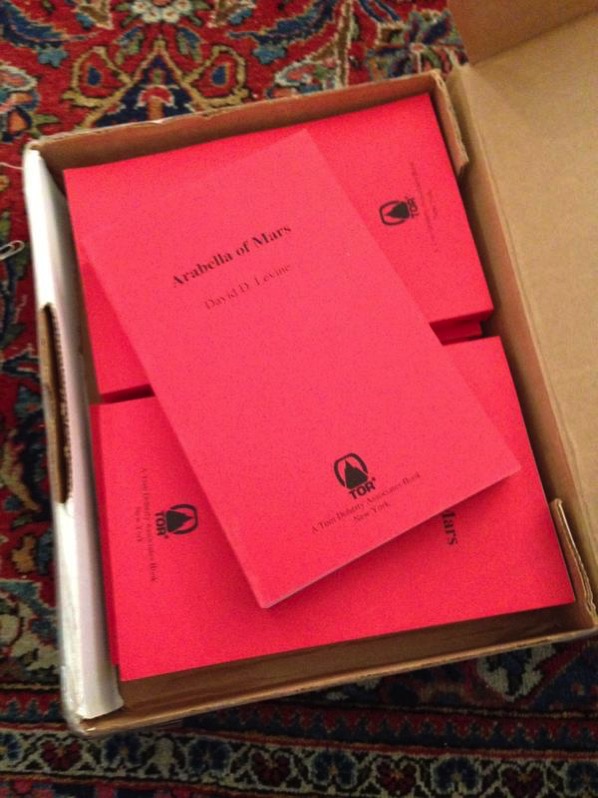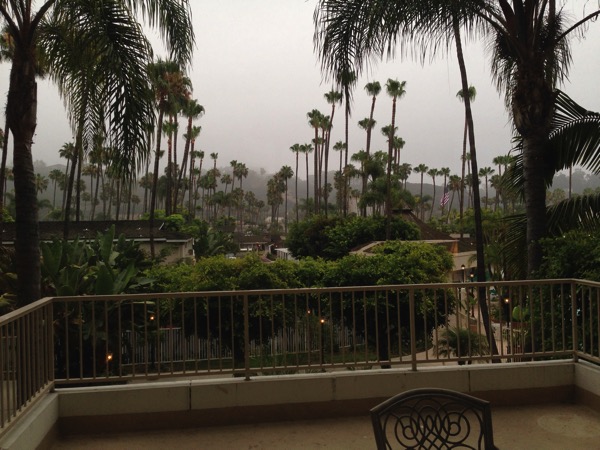It’s now a little more than six months since Kate’s surgery, and she’s doing pretty well.
Her progress has not been uniform. We haven’t messed with the steroid dose, so there has been no significant backsliding, but at the moment the aphasia, weakness, wobbliness, and lack of stamina are a bit worse than last week — though not nearly as bad as they were in the first couple of months after surgery. She’s just slow, and tires easily, and sometimes has trouble finding words. We think that what we’re seeing now is likely fatigue from last week’s chemo (the fourth of six planned monthly rounds). She hasn’t had any serious chemo side effects, but the fatigue is definitely there and tends to hit hardest in the week after the dose.
One issue that is new since last month is what she describes as “holes in her head,” or general memory and cognitive issues. We were warned that there could be short-term memory problems appearing some months after radiation. We’ve started working with Laurel, the speech therapist who was so helpful earlier, on this; she does general cognitive therapy as well as speech. We also have appointments with physical and occupational therapists next week, to work on the weakness and wobbliness. We’re also trying to take lots of walks and do exercise, on the naturopath’s advice that “the more energy you expend, paradoxically, the more energy you’ll have.”
But life is more than just a litany of symptoms. We attended the annual gay square dance convention in St. Louis over Memorial Day weekend, and that was good. Kate wasn’t able to dance, but I did, and we hung out with our friends and had many fine meals. (Our food karma was surprisingly good, given how unprepossessing the neighborhood around the hotel was; I’m very glad we decided to rent a car.) Kate has been industrious about decluttering the house, clearing out all kinds of old sheets, clothes, books, and papers, and has been reading a lot. We’ve also seen some movies and some excellent local theatre, including THE LION and THREE DAYS OF RAIN at Portland Center Stage (both are still playing and are recommended!).
As for me, I traveled to Southern California for a week to record another couple of courses for Lynda.com, one on the “sed” text processing language and the other on the Mailman mailing list manager; those will go live in June. I’ve been plugging away on the sequel to ARABELLA OF MARS — the draft stands at nearly 50,000 words now, out of a planned 90,000 — and beginning to lay plans for the release of book 1 in June 2016. One thing I need to do right now is solicit blurbs for the cover. Whose endorsement would make you more likely to pick up a science fiction book with a historical setting?
The bottom line is that things are generally not too bad, though emotionally we are both occasionally down. One thing we need to do more of is to get together with friends. In the first few months we had house guests and visitors galore, but lately it’s been just us more often than not, and that can be kind of isolating. So if you can come by for a chat, or join us for a meal, or go out for a walk in the park, or anything like that, please drop me a line and see if we can find a time that works for everyone. If you’re not local, a card, letter, email, or phone call would be welcome too.
Thanks to Mary Kay for helping Kate while I was in California, and to Amanda, who helped Kate when I took a brief respite trip to Seattle. We also got visits from Zoe and Patty, Debbie and Alan (who brought a delicious casserole), Ariel, Mark, and probably others I’m forgetting, and moral support from Janna, Greg, Mary, Shannon, and many others. Thank you so much for your continued support.

 Things are going pretty well around here. In the last two weekends we attended the Locus Awards in Seattle and the Westercon in San Diego, and both were fun, if quite laid-back for us. I was on a lot of programming at the Westercon; Kate attended a couple of program items a day and spent much of the rest of the time napping or relaxing in the room. But we had many fine meals, hung out with friends, and enjoyed the weather (paradoxically, San Diego was a refreshing 68 degrees and overcast while Portland was an unpleasant 90+ degrees and sunny).
Things are going pretty well around here. In the last two weekends we attended the Locus Awards in Seattle and the Westercon in San Diego, and both were fun, if quite laid-back for us. I was on a lot of programming at the Westercon; Kate attended a couple of program items a day and spent much of the rest of the time napping or relaxing in the room. But we had many fine meals, hung out with friends, and enjoyed the weather (paradoxically, San Diego was a refreshing 68 degrees and overcast while Portland was an unpleasant 90+ degrees and sunny).  As you may recall, my “Venus noir” story “The End of the Silk Road,” set in the same universe as “The Wreck of the Mars Adventure” and my forthcoming novel Arabella of Mars, was selected for The Year’s Best Military SF and Space Opera. Well,
As you may recall, my “Venus noir” story “The End of the Silk Road,” set in the same universe as “The Wreck of the Mars Adventure” and my forthcoming novel Arabella of Mars, was selected for The Year’s Best Military SF and Space Opera. Well,
Recent Comments